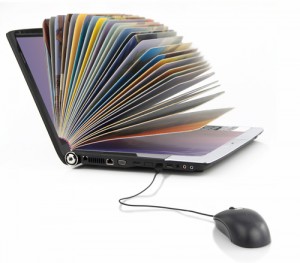Usefulness of technologies to ease the way of learning
Ashish Kumar March 20, 2014Introduction: In the 21st Century era of digital education, the usefulness of technologies to assist education process, both in terms of theories and practices of the pursuit of academic excellence is indeed understated, underestimated and even taken very much for granted. Along the broad spectrum of educational and academic activities and involving the entire line of stakeholders, viz. educators, administrators, policy makers, why even politicians and legislators, finally the student community, all are benefiting from the deployment of technology and will continue to do so, for a long time to come. Indeed technology has made a major difference in education- in its quality, pursuit, scope, depth and breadth of academics and also ushered in an era of competitiveness, speed, accuracy, efficiency and effectiveness in the way of modern learning.
- Technology has made paradigm shifts in the identification, dissemination and delivery of learning: Not even the most imaginative person in the19 or 20th Century could have ever imagined students coming to class rooms armed with nothing except their laptops, mobile phones, Personal Digital Assistant(PDA’s) or Smartphones or iPads. Nobody could have realized that the entire lectures could be recorded on these devices and played back while learning at home. Nobody could have thought that video recordings of classroom proceedings could be captured live, even the wry expression on the professor’s face, with audio sounds and video images and digitally stored for future usage. Technology has indeed changed the classroom experience both for the educators and the educated, made it more effortless, pleasant, enjoyable and stress-free
- Through the use of Video Conferencing modes, professors could attend to several classes simultaneously; also physical presences of educators are not really necessary since his lectures could be recorded and played live in class loudspeakers. Educators could interact on one-to-one or one-to –many through modern live technology and this saves time, efforts and energy costs
- Audio and video presentations through Power Point Presentations (PPP) and web cameras could make lecturing more interactive, interesting and relevant. Detailed discussions of PPP could be engaged with students and this saves a great deal of lengthy, long drawn and tedious lectures, both for lecturers to speak continuously for long hours and for students to listen throughout the lengthy learning sessions. Graphic contents could accompany PPP that would make them more lively, enjoyable and retentive
- Social Media Networking has indeed revolutionized teaching in the 21st century. Primarily designed as social media tool for friends and associates to draw closer and exchange pleasantries, its scope and ambit has extended to the domain of serious educational pursuits too. Websites like Facebook, Twitter and LinkedIn, etc, for instance, has lengthened the scope, intensity and regularity of educational interfacing beyond the Classroom Model. Facebook, with over 600 million active users, takes education to much higher planes and offers teachers opportunities to freely interact informally with student community through Discussion Boards, posts, messaging and bulletins. Students could also interact with peer groups, education networks and other modes using social media as an interactive and integrative educator tool and technique. Facebook and LinkedIn, for instance, have very high technological potential and apps which could be placed at the disposal of educators, students, administrators and stakeholders along the education spectrum. The potential and possibilities of using Social Networking media in the realms of education is innovative, although enticing and offers limitless possibilities for the future for both educators and the educated.
Conclusions: Veritably, the skies do not set limits for deployment of useful and needed technology in the domains of education and its supportive functions. Therefore, it would now rest on the academic administrative bodies and powers that be, who need to take the correct judgment and executive decisions regarding greater provision and perpetration of state-of-the –science technology in the domains of education and academics with long term perspectives in view.



